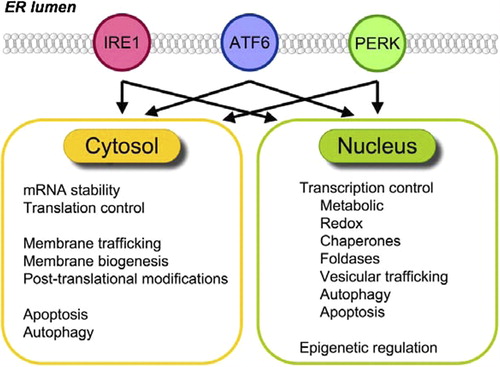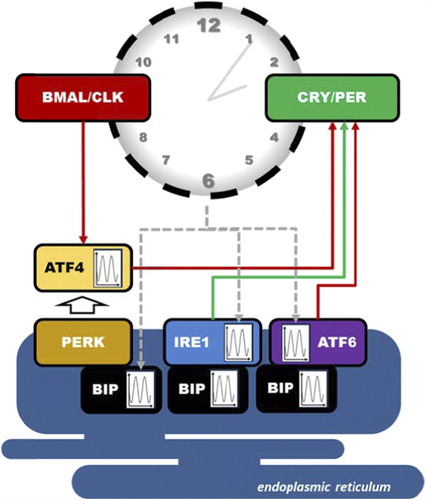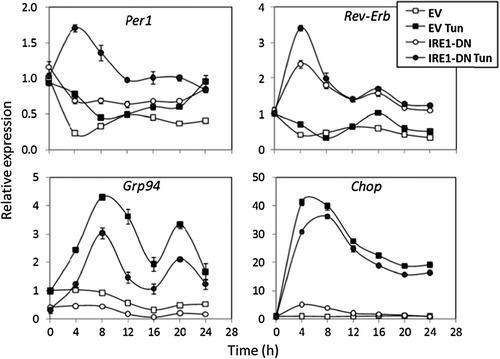Figures & data
Figure 1. Endoplasmic reticulum proximal UPR signaling. The three canonical arms of UPR signaling are indicated as follows: IRE1 (red), ATF6 (blue), and PERK (green). Downstream signals are coded with the same colors. IRE1 activation leads both to NFkB, ERK, and JNK activation and to the non-conventional splicing of XBP1 mRNA and the degradation of RNA (RIDD). ATF6 activation leads to its export to the Golgi complex (GC), subsequent cleavage, and release of an active transcription factor (ATF6c). PERK activation leads to the phosphorylation of the translation initiation factor eIF2α as well as that of the oxidative response transcription factor NRF2.

Figure 2. Biological outcomes of UPR signaling. The IRE1, ATF6, and PERK arms of the UPR constitute an integrated response activated upon ER stress that leads to both cytosolic (orange) and nuclear (green) events. The integration of those combined mechanisms controls life and death decisions in cells.

Figure 3. Schematic representation of signaling intersections between UPR and circadian clock. Red and green arrows indicate positive and negative regulation, respectively. Dotted arrows underline presumed regulation of genes by the circadian clock. Identified circadian rhythms for activity or expression of proteins of the UPR are indicated.

Table I. Alteration of the expression of circadian clock (CC) components and CC functionality in ER stress-impaired models.
Table II. ER stress genes whose expression is altered in experimental models of circadian clock modulation. Clk/Clk mice have a point mutation causing the deletion of exon 19 of the Clock gene and synthesize the mutant CLOCK protein (CLOCKΔ19), which lacks transcriptional activity.
Figure 4. Circadian expression of Per1, Rev-Erb, Grp94, and Chop in U87 cells stably expressing an IRE1α dominant negative form (IRE1α-DN) or a control empty vector (EV) upon basal or stress (tunicamycin 2 μg/mL) conditions. Cells were synchronized with a 2-h serum pulse. These experiments were carried out in triplicate. Two transcriptional UPR targets, Grp94 and Chop, were used as control of ER stress induction. Data are represented as mean ± SD.


